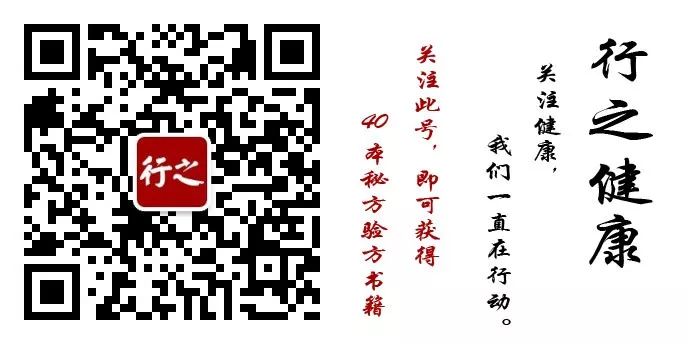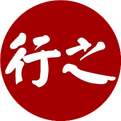1. Characteristics of the Medicine and Its Properties Huang Qi (Astragalus) is white on the outside and yellow on the inside. In terms of symbolism, white corresponds to metal, and yellow corresponds to earth, so it can be understood that the white color enters the lungs, while the yellow color enters the spleen. From the perspective of taste, it has a sweet flavor and a bean-like aroma, and it is warm in nature. It grows straight and has the symbolism of the Zhen hexagram, which represents the east and can promote Yang energy. This entire representation forms the medicinal image, indicating that this herb can tonify the Qi of the lungs and spleen and can also raise Yang energy. In terms of its functions and indications, we can simply summarize it as warming and tonifying the Yang Qi of the spleen and lungs, which can replenish the Qi of the lungs and spleen while also elevating it; this is its main characteristic. Huang Qi belongs to the moistening category in the five major classifications of medicinal properties by Mr. Zhang Yiyuan. As we have learned in TCM Internal Medicine, Mr. Li Dongyuan stated in his works such as “On the Spleen and Stomach” and “On Internal and External Injuries” that “when the spleen and stomach are injured, a hundred diseases arise.” The “Huang Di Nei Jing” also mentions that “human beings rely on the Qi of the stomach as their foundation,” and all organs depend on the Qi of the stomach for their vitality. Therefore, when the Qi of the spleen and stomach is deficient, it can lead to various issues in other organs. 2. Effects of Huang Qi (Excerpt)
- Effects on the Heart
The third indirect effect of Huang Qi is that by tonifying the Qi of the lungs and spleen, it indirectly affects the heart. Why does it have an effect on the heart? Because it tonifies the Zong Qi of the upper jiao, which has the function of circulating through the heart vessels and facilitating respiration, thus having a beneficial effect on the heart. Clinical studies have found that Huang Qi can enhance myocardial contractility and raise blood pressure, which is its effect on the heart. From the perspective of the five elements, it is generally said that fire can overcome metal, but conversely, metal also has a positive effect on fire. The relationship between heart fire and lung metal can be likened to the relationship between a car engine and its radiator. The radiator represents the lungs, while the engine represents the heart. One must achieve a balance; the heart continuously beats and generates heat, and how does it cool down? The lungs, as the radiator, circulate to cool it down. This is a metaphor for consideration. Additionally, tonifying the Qi of the spleen and stomach can indirectly help the liver and gallbladder’s Shao Yang energy to rise from the east. This is the famous Yang Dan Decoction method, which includes variations such as Xiao Yang Dan, Zheng Yang Dan, and Da Yang Dan. Da Yang Dan consists of Huang Qi combined with Gui Zhi (Cinnamon Twig), resembling Huang Qi Jian Zhong Decoction with Ren Shen (Ginseng). Da Yang Dan has a strong uplifting power and can treat various conditions of liver and spleen Qi and blood deficiency, where the uplifting power is insufficient, leading to many symptoms.
- Effects on the Kidneys
The fourth indirect effect is that when the lung metal is sufficient, it can generate kidney water. The most common abnormality in kidney function is difficulty in urination. In severe cases, patients may experience kidney failure, oliguria, proteinuria, edema, or even anuria. Clinical studies have found that Huang Qi is a very suitable medication for treating kidney failure. These are some of the indirect effects of Huang Qi. 3. External Application of Huang Qi through Fumigation How is Huang Qi used clinically? Generally, Huang Qi is more commonly taken internally, often prepared as a decoction. However, historical medical texts also introduce external treatment methods for Huang Qi, particularly fumigation methods, which are recorded in literature such as “Ancient and Modern Medical Cases” and “Famous Doctors’ Cases.”
- Case 1
Xu Yinzong treated Empress Liu, who suddenly could not speak due to wind invasion, with a pulse that was deep and her mouth tightly shut (Note: the original text states deep and tight pulse). Many doctors were at a loss. The empress had been affected by wind evil and could not speak, her jaw was clenched, and she could not take medicine. Other doctors did not know what to do, and then Yinzong said, “If the medicine cannot be taken orally, it should be steamed with the soup vapor, allowing the medicine to enter the pores, and she can recover in due time.” He then prepared Huang Qi Fang Feng Decoction, which consists of Huang Qi and Fang Feng (Siler), boiled in a large quantity of water placed under the bed, creating a vapor like smoke for fumigation. The next day, she was able to speak. After fumigating for about a day and night, she woke up the next day and could talk. This is a very classic medical case, listed as the first case in “Famous Doctors’ Cases.” This case has had a significant impact on later generations.
- Case 2
It is recorded that during the early years of the founding of the nation, Xu Teli’s wife had a similar condition, often suddenly fainting and regaining consciousness after two or three days without any special incidents. Western medicine diagnosed it as hysterical fainting, and many renowned doctors from both Western and Chinese medicine could not cure her. Later, she encountered the old TCM doctor Peng Chongrang, who took a look and said, “Let me try a prescription,” and prescribed Huang Qi (1 tael) and Fang Feng (5 qian), decocted and administered via nasal feeding. In the past, nasal feeding was not possible, but now we have the conditions to administer medication this way. As a result, after taking it, the lady immediately regained consciousness. Xu Teli was particularly curious and asked, “Where did you learn this method?” Mr. Peng replied, “This condition is very simple; it is recorded in the “Records of the Grand Historian: The Biography of Bian Que and Cang Gong,” where Bian Que saw the Jin State doctor Zhao Jianzi, who had a condition called ‘corpse convulsion.’ Your wife has the same condition, called ‘corpse convulsion.’ This condition has existed from ancient times to the present; I merely learned an old prescription from the ancients, which is like putting new wine in an old bottle. Therefore, it is effective.” This method is also featured in the TV series “The Miracle Doctor Xi Lai Le.” The external treatment method of Huang Qi is very remarkable; we often treat kidney diseases clinically, especially the aforementioned kidney failure and uremia. Some patients have difficulty swallowing decoctions for a long time, or the decoctions may adversely affect the liver and kidneys due to their circulation through these organs. Therefore, the fumigation method of administering medication through the skin can be boldly attempted. Some practitioners use Huang Qi combined with Da Huang (Rhubarb), Yi Mu Cao (Motherwort), and depending on the situation, can also add Fu Zi (Aconite). After decocting, the patient is fumigated, and medication is administered through the skin, achieving excellent therapeutic effects. Compatibility and Usage Precautions (Omitted) 4. Indications for Use In terms of tongue appearance, the patient may have a depression in the middle and the anterior third of the tongue. This is a typical tongue appearance, where the shape shows a depression, either in the middle or slightly at the front, observed when the tongue is relaxed. In terms of pulse, the right wrist pulse is relatively weak and feeble, which we can refer to as ‘headless pulse.’ If the patient also has blood deficiency in the liver and gallbladder, and Yang energy is not rising, the left wrist pulse may also be weak, but this is not always the case. Typically, the right wrist pulse is weak, which is its typical indication for use. As one ages, it is beneficial to try these three methods when one reaches a certain age, as these four abilities may decline.


